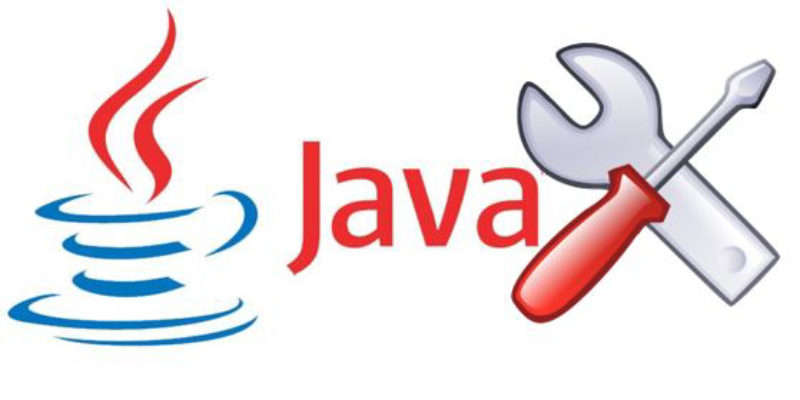
Top 5 Java Deployment Tools To Consider For Web Development Project
In this blog, we present five highly recommended open-source tools that a developer can use to improve the Java deployment process of big as well as small projects. These tools ease the task of developers and are the best as well as the most-used tools. They are in demand among the developers who have developed plugins, and connectors that can be used in a wide range of situations. In addition to that, these tools can dramatically improve the deployment work assigned to Java Development Company. They can empower the development team to build better and advanced software in a less stressful working condition. Let us talk about the tools for further information.
1. Jenkins
Jenkins is an automation server that allows robust integration by empowering developers to implement the technical parameters of a Continuous Delivery. It can be used as a simple server or can be transformed into the continuous delivery hub for a web development project. It is similar to Apache Tomcat that is a server-based system executed in a servlet container. It supports Subversion, CVS, Git, Perforce, ClearCase, Mercurial, and RTC. Apache Ant, Maven and sbt based projects can be executed with Jenkins. Its functionality can be scaled with the use of plugins.
2. TeamCity
TeamCity is the most recommended server from JetBrains that is Java-based and offers continuous integration. It was initially released on October 2, 2006, and is commercial software that is licensed under the proprietary one. Open Source projects can avail a free license. Business enterprises can Hire Java Programmer for TeamCity installation and configuration purpose. The major benefit it offers to the developers is it does not hamper the Dot NET development work. The TeamCity has a browser-hosted interface that offers a primary way to manage TeamCity users, agents, build configurations and projects.
3. CA Release Automation
The CA Release Automation tool is quite popular among the developers to manage software releases having integration with a large number of third-party tools that can deploy Java components to different software levels. The tool performance is remarkable when it is about the management of complicated Java deployments. Tools mentioned above like Jenkins are mostly used for simple deployment and build job. But when a complicated and advanced Java deployment is needed, the CA Release Automation tool is a perfect mix of innovation and features making it shine brighter than its competitors.
4. Apache Maven
Apache Maven is not just a deployment tool for Java web application development. It has the functionality to compile the code, run unit tests, pull JAR files from remote location databases, and even push code releases into artefact databases. For developers, it’s more in the development tool than the deployment tool. Maven has the functionality to be the foundation of any web development project. The major functionality of the Apache Maven is the packages and builds of the application. But, with the inclusion of a giant ecosystem, it is possible to perform additional functionality apart from the packaging of web applications, like deploying them into JAR file repositories like Nexus.
5. TravisCI
TravisCI is a distributed continuous integration service used in building and testing software projects. Open source projects are free to test while Private projects are tested on a fee basis. Travis Pro offers custom deployments on the customer’s own hardware. Travis CI is configured with an extension named .travis.yml, which is a YAML based text file. This file mentions about the programming language used, the desired building and testing environment, and numerous other important parameters.
Frequently Asked Questions

1. What is Java deployment?
Java Plug-in is used for deploying Java applets that run inside a web browser. Web browsers support web browsers including Internet Explorer, Mozilla, and Netscape Navigator. Java Web Start is a tool used for deploying standalone Java applications on the desktop, using JNLP.
2. Is Jenkins a deployment tool?
Jenkins is an easy to extend, open-source continuous integration server. Jenkins can be used to compile and test your code, and then deploy in the Octopus Deploy. Just like Jenkins makes the build automation simple, Octopus Deploy makes the deployment automation smooth.
3. How do you deploy Java code?
To deploy the Java Web Start application, in the starting compile the source code, wrap it as a JAR file, and sign the JAR file. Java Web Start applications are launched using the Java Network Launch Protocol (JNLP). Hence, you must build a JNLP file to deploy your application.
4. How do you deploy a Java project?
In the starting, deploy a Java web application inside the Tomcat server container.
• Open the File menu, click New and click Project.
• Click Java, then choose Web Application and click Next.
• Mention the name DockerJavaWebApp and click Finish.
• In the Project tool window, right-click src, point to New and click Servlet.
• Mention the name MyServlet and click OK.
5. How build and deploy Jenkins?
Jenkins – Automated Deployment
• Go to Manage Jenkins.
• Open Build project and click the Configure option.
• In the Deploy section to a container section, mention the given details of the server on which the files required to be deployed and click on the Save button.
Conclusion:
The tools mentioned in this blog post are all open source tools and can be easily implemented in the web development project. They are strong enough to deploy all kinds of web applications and are highly suited to build Java chat apps as well. The future trend is all about the chap apps and its implementation. Try these robust tools and experience how they assist you to move ahead in the deployment phase for the Java projects. If you are planning to integrate these tools, look for a reputed development company. At Java India, you will get all the important resources to finish the deployment work easily. We will provide you development, customization, and deployment service keeping all your requirements in mind.

